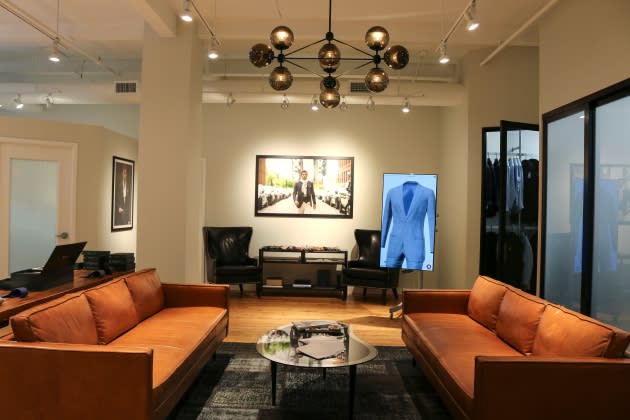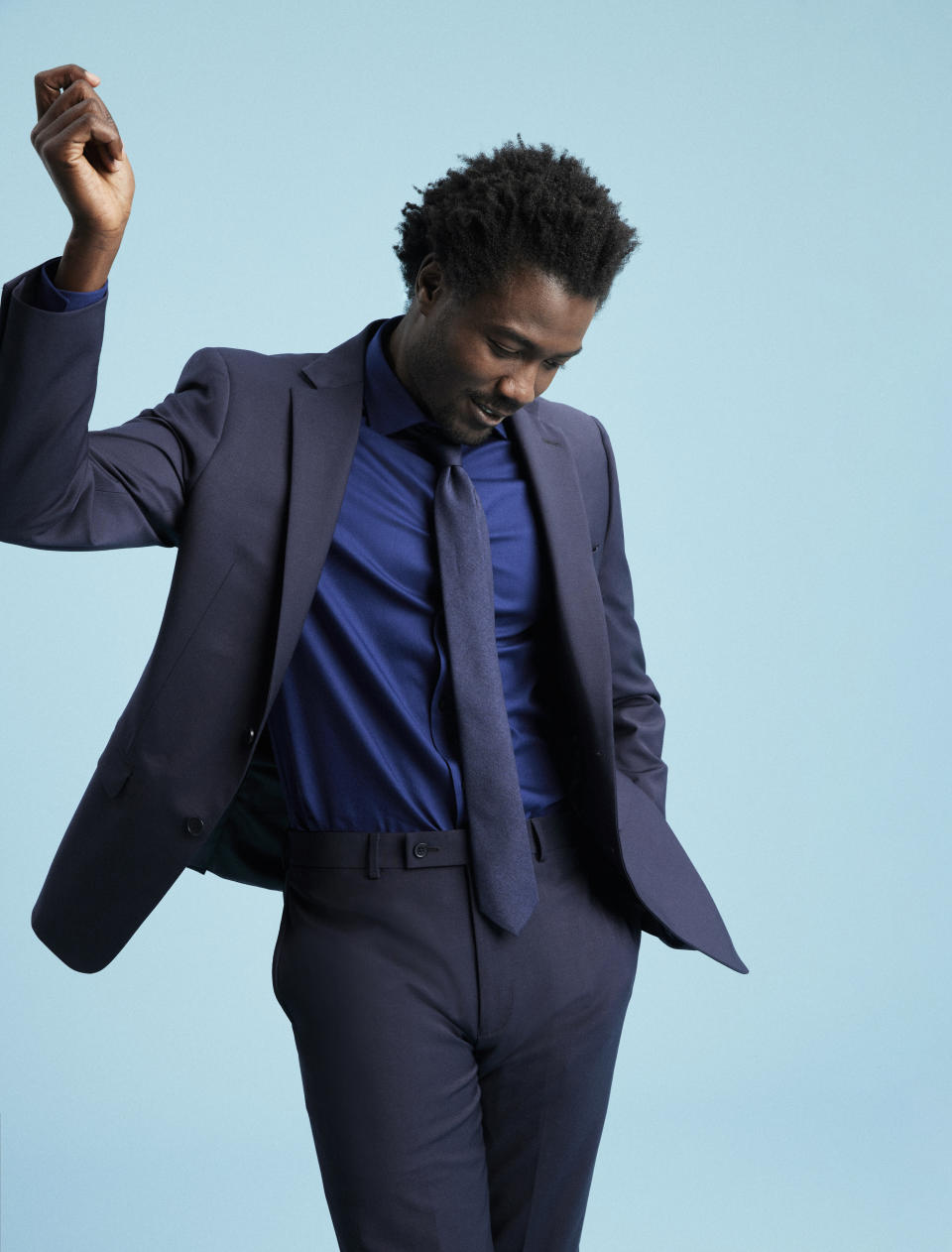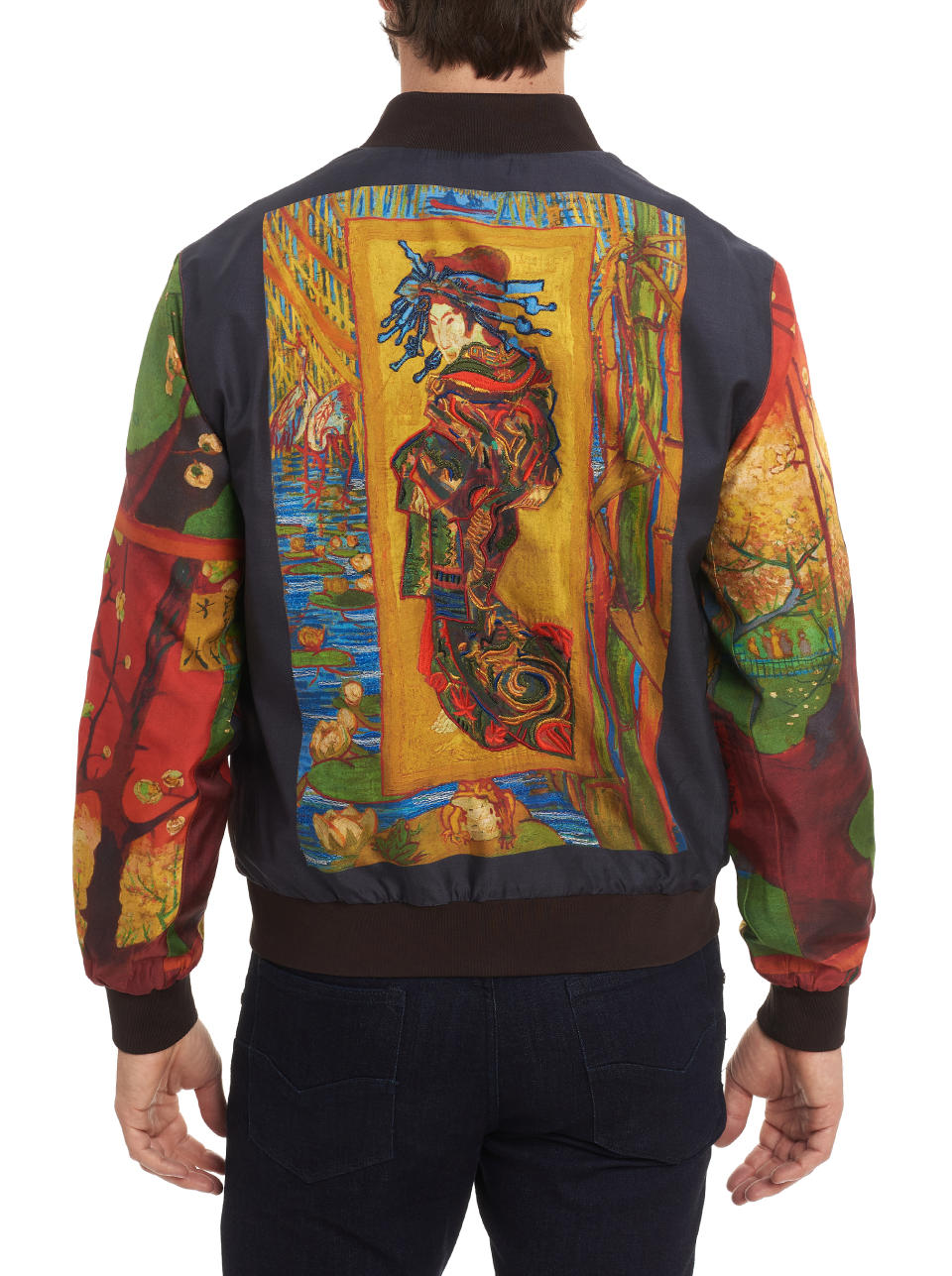Occasion Dressing Seen Spurring Sales Into Second Half

Love is in the air and men’s retailers are reaping the benefits.
Buoyed by the surge in the number of weddings and other special occasions, merchants are expecting the strong sales of the past year to continue at least through the second half. Add to that the reworking of the appropriate return-to-work wardrobe and the future — at least for now — looks bright for many menswear retailers.
More from WWD
Stores such as Target, Walmart, Macy’s, Nordstrom and Kohl’s are being impacted by the larger economic issues facing the American consumer — inflation, a looming recession, and high gas and food prices — exacerbated by inflated inventories that are sure to lead to heightened promotions in the second half, but there remains optimism in menswear, especially at stores that cater to higher-income shoppers.
While Macy’s last week reported depressed second-quarter earnings and cut its year-end forecast, Sam Archibald, the retailer’s general business manager of apparel, said the company was “really pleased with results in the first half” in all apparel categories and “men’s was a standout performer. What’s driving that — and for the back half in the men’s space — is that there are so many wearing occasions for the men’s consumer. We see a lot of wardrobe diversity with this new fluid lifestyle of in office, on vacation and at home.”
Guys today are seeking both comfort and trend-right wardrobes for all these aspects of their life, Archibald added, whether that’s tailored clothing, furnishings or denim. “And they’re not separate consumers,” he said. “So it’s a very exciting time for the men’s business and the apparel space in general.”

Macy’s is also seeing men rushing to update their wardrobes for the weddings, events and holiday parties they’re preparing for in the next few months, which is giving both the tailored clothing and neckwear categories a boost. “The height of wedding season is now, and then there are the holiday parties and get-togethers,” he said. “And we expect that to continue through the fall.”
And although Macy’s did experience some “bumps in the road” when it came to the supply chain, Archibald said that appears to have been resolved for the most part. “We took actions to get ahead of it and much of that is now behind us.”
As a result, he’s upbeat about the remainder of the year despite the retailer’s lowered forecast. “We serve a broad breadth of consumers and we feel really good about [the future].”
“I’m very hopeful that people will continue to go out and go back to work in some hybrid form,” said Dana Katz, owner of Miltons, a three-unit men’s chain based in suburban Boston. Add to that the holiday parties that are expected to return in full force this year, and Katz is anticipating a further uptick in business the remainder of 2022.
“Weddings are still strong and special-occasion dressing continues to be the most important driver to our business,” he said. “We have our eyes peeled, but we haven’t seen evidence of the customer pulling back. We’ve been fortunate.”
Ditto for Ken Giddon, president of Rothmans, which operates four stores in the New York City area. “I’m still optimistic,” he said. “We’re handling a lot of requests for wedding attire and that’s not slowing down. We’re seeing true interest among young men and their families wanting to dress up. It used to be just a tuxedo for the wedding, now it’s something for the rehearsal dinner and the Sunday brunch. They’re giving a lot more thought to their wardrobe.”
In addition, after two years of fits and starts, it appears that this fall will truly mark a return-to-work for most men. “After so many false starts, they are finally going to be people returning to work,” he said. “And they may not have the right clothes. No one knows what the new dress code is going to be, but one thing remains consistent: they still want to look good, so that creates responsibility for stores to solve that dilemma.”
For most men, that will translate into hybrid pieces such as sport coats and pants that are both comfortable and sophisticated, worn with updated sport shirts or sweaters.
Giddon said that although he remains “very bullish about business for fall,” there are issues that have to be addressed, such as the shortage of inventory. “Our biggest problem is the supply of goods,” he said. “But one of the few positives to come out of COVID[-19] is that we’ve all become more nimble and learned to adjust when we don’t know what the future holds. But even if there’s a recession, it’s better than being shut down for six months.”
Hill Stockton, owner of Norman Stockton in Winston-Salem, North Carolina, is expecting a strong back half of the year.
“I still think business will be good,” he said. “We can’t keeping having 20, 30 or 40 percent increases, but flat wouldn’t be bad since last fall was so good.” He’s still projecting sales to be up 15 to 20 percent by the end of the year. “It’ll be interesting to see what happens in the spring, though, so we’re holding some open-to-buy back.”
Although his customers are not oblivious to the macroeconomic issues, they’re also not cutting back on purchases. “Nobody likes paying more for gas, but the effects on the Walmarts and Targets are more than that of the specialty stores.” Among his top sellers have been suits for events as well as to graduated students from nearby Wake Forest University who need to dress up for job interviews and their new employers. “They don’t even look at the price,” he said. In addition to tailored clothing, other top sellers include five-pocket pants that Stockton had expected to run its course already. “I keep looking at the figures and am surprised — sales are up 100 percent over a year ago.”
Matt Mueller, chief executive officer of Knot Standard, which operates 10 of its own stores as well as the 59 locations at Brooks Brothers and another four at Nordstrom (rolling out to another nine units for fall), said, “Since March, we’ve seen more demand than we can handle. There’s been a drop on the low-end, but growth at the high end, and our average order is $1,700, so we’re not seeing a slowdown.”
Two years ago customers were only concerned with what they were wearing from the waist up for their Zoom calls from their home offices, he said. Now they’re searching for anything but athleisurewear and instead are refreshing their wardrobes for all the events on their calendar for the fall and holiday seasons.
“Our clients are very much about getting out and being with people again,” he said. “As they come back from their crazy summer travel and look ahead to their overbooked holiday party schedule, we’re helping them redo their wardrobes — not so much for work, but for going out. And we’re seeing that trend translate into wardrobes for play that can also be used for work.”
Top sellers, Mueller said, include blazers and pants, bomber jackets, long-sleeved tailored popovers and performance polos.
Andrew Berg, president of Robert Graham, which sells the majority of its line through direct-to-consumer channels, said: “The hardest thing to manage is uncertainty.” He acknowledged there are some fears of a consumer pullback as a result of the ongoing pandemic, inflation and the tensions overseas, but so far he hasn’t experienced a slowdown in sales.

“Our customer is still eager to buy so we’ve been able to keep our momentum going,” he said.
Among the bright spots for the brand is its knitwear and its golf collections that complement sales of the company’s signature brightly patterned button-down shirts. “Wovens are still our bread-and-butter, but the addition of knits, golf and women’s has really helped us see some exciting growth,” he said.
Berg added that the company has managed to retain its “passionate and loyal customers and also have attracted a new enthusiast to the brand — and the combination is working well.”
One Brooklyn-based men’s retailer said he believes the skyrocketing sales of last year were an “aberration” as men, who had been homebound for months, rushed to update their wardrobes.
“It was euphoria, but now we’re getting back to a more-normal cycle,” he said.
During the upsurge, many manufacturers ordered too much merchandise, believing the good times were never going to end, and as a result, there’s plenty of inventory available for immediate purchases, he said.
“Everyone overreacts in our industry, so I’ll be taking advantage of opportunities and buying closer to the season. Expenses are through the roof so it’s really all about margins. You have to buy better rather than sell higher,” he concluded.
Sign up for WWD's Newsletter. For the latest news, follow us on Twitter, Facebook, and Instagram.

